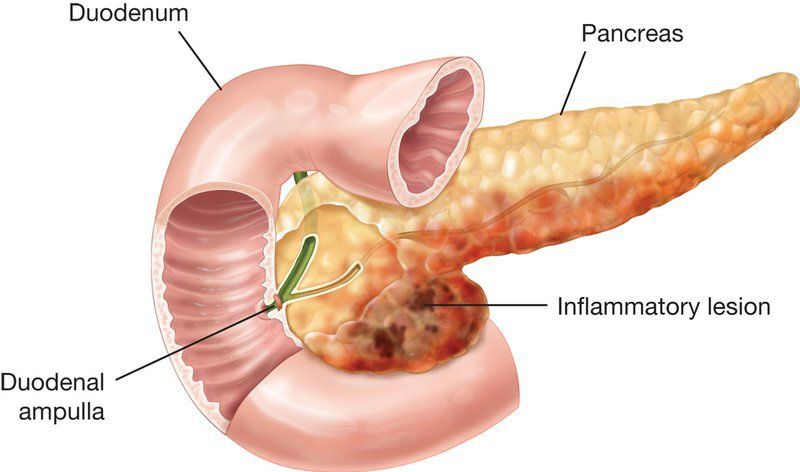The global exocrine pancreatic insufficiency diagnostics market size was estimated at USD 3.38 billion in 2023 and it is expected to surpass around USD 6.8 billion by 2033, poised to grow at a CAGR of 7.24% from 2024 to 2033.

Key Pointers
- North America led the market with the largest market share of 48% in 2023.
- By Diagnostic Method, the laboratory tests contributed the largest market share of 70% in 2023.
- By End-use, the hospitals and clinics generated the maximum market share of 55% in 2023.
Get Sample@ https://www.visionresearchreports.com/report/sample/41375
What is exocrine pancreatic insufficiency (EPI)?
What causes exocrine pancreatic insufficiency (EPI)?
Exocrine pancreatic insufficiency (EPI) can be caused by a range of conditions that impair the pancreas’s ability to produce or secrete digestive enzymes. Common causes include:
- Chronic Pancreatitis: Long-term inflammation of the pancreas can damage the cells responsible for enzyme production.
- Cystic Fibrosis: A genetic disorder that leads to thick mucus buildup, which can block pancreatic enzyme release.
- Pancreatic Cancer: Tumors in the pancreas can interfere with enzyme production or secretion.
- Pancreatic Surgery: Surgical removal of parts of the pancreas can reduce enzyme production.
- Autoimmune Pancreatitis: An autoimmune reaction can lead to inflammation and damage of the pancreatic tissue.
- Genetic Conditions: Other rare genetic disorders can also affect pancreatic function.
How is exocrine pancreatic insufficiency (EPI) diagnosed?
Exocrine pancreatic insufficiency (EPI) is diagnosed through a combination of clinical evaluation, symptom assessment, and diagnostic tests. Key diagnostic approaches include:
- Medical History and Symptoms: The doctor will assess symptoms such as chronic diarrhea, weight loss, and malnutrition, and review any underlying conditions or risk factors.
- Stool Tests: A fecal elastase test is commonly used to measure the levels of elastase, an enzyme produced by the pancreas. Low levels suggest EPI. Other stool tests may measure fat content to assess malabsorption.
- Imaging Studies: Techniques like abdominal ultrasound, computed tomography (CT), or magnetic resonance imaging (MRI) can help visualize structural changes or damage to the pancreas.
- Blood Tests: While not always definitive, blood tests may reveal nutritional deficiencies or other abnormalities consistent with EPI.
- Pancreatic Function Tests: These may involve assessing how well the pancreas responds to stimulation with secretin or other agents that induce enzyme release. This is less commonly used but can provide direct evidence of pancreatic insufficiency.
How is exocrine pancreatic insufficiency (EPI) managed or treated?
Exocrine pancreatic insufficiency (EPI) is primarily managed through enzyme replacement therapy and supportive care to address nutrient absorption issues. Key treatment strategies include:
- Enzyme Replacement Therapy: Patients take oral pancreatic enzyme supplements that contain lipase, amylase, and protease to aid digestion. These supplements are usually taken with meals and snacks to help break down fats, carbohydrates, and proteins.
- Dietary Modifications: A dietitian may recommend a high-calorie, low-fat diet to ensure adequate nutrition and manage symptoms. Small, frequent meals might be advised to improve digestion and absorption.
- Nutritional Supplements: Additional vitamins and minerals may be needed to address deficiencies caused by poor nutrient absorption. Common supplements include vitamins A, D, E, and K, as well as calcium and magnesium.
- Management of Underlying Conditions: Treating the underlying cause of EPI, such as managing chronic pancreatitis or cystic fibrosis, is crucial for overall management. This may involve medications, lifestyle changes, or other interventions specific to the underlying condition.
- Monitoring and Adjustment: Regular follow-up with healthcare providers is necessary to adjust enzyme dosages, monitor nutritional status, and address any complications or changes in symptoms.
Exocrine Pancreatic Insufficiency Diagnostics Market Top Trends
- Personalized Medicine:
- Tailored Diagnostics: As understanding of genetic and molecular factors improves, there is a push towards personalized diagnostic approaches that cater to individual patient profiles, enhancing the accuracy of diagnosis and treatment plans.
- Integration of AI and Machine Learning:
- Data Analysis: Artificial intelligence (AI) and machine learning are being increasingly employed to analyze complex diagnostic data, predict patient outcomes, and improve the accuracy of diagnostic tools.
- Predictive Analytics: AI is also being used to develop predictive models that can help in early detection and management of EPI.
- Expansion of Diagnostic Options:
- New Tests and Devices: The market is seeing the introduction of new diagnostic tests and devices that offer greater sensitivity and specificity for detecting EPI, including novel assays and imaging techniques.
- Increased Awareness and Screening:
- Awareness Campaigns: There is a growing effort to increase awareness about EPI among healthcare professionals and the public, leading to more proactive screening and early diagnosis.
- Educational Programs: Training and educational programs for healthcare providers are becoming more prevalent, improving diagnostic accuracy and patient management.
- Regulatory and Reimbursement Changes:
- Regulatory Approvals: New diagnostic tools are undergoing rigorous regulatory evaluations, and there is a trend towards streamlined approval processes for innovative diagnostics.
- Reimbursement Policies: Changes in reimbursement policies are making it easier for patients to access advanced diagnostic tests, thereby driving market growth.
Read More@ https://www.heathcareinsights.com/u-s-liver-cancer-diagnostics-market/
Exocrine Pancreatic Insufficiency Diagnostics Market Segmentation:
By Diagnostic Method
- Laboratory Tests
- Indirect Pancreatic Function Tests
- Stool Tests
- Blood Tests
- Other Tests
- Indirect Pancreatic Function Tests
- Imaging Tests
- CT scans
- MRI
- Endoscopic Ultrasound for pancreatic function tests
By End-use
- Hospitals & Clinics
- Diagnostic Laboratories
- Research Institutes
By Region
- North America
- Europe
- Asia Pacific
- Latin America
- Middle East and Africa (MEA)
Buy this Premium Research Report@ https://www.visionresearchreports.com/report/checkout/41375
You can place an order or ask any questions, please feel free to contact sales@visionresearchreports.com| +1 650-460-3308
